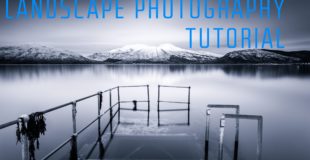Discover the secrets and essential elements to capturing beautiful scenes in this landscape photography tutorial.
Follow First Man Photography for the latest updates:
Instagram – http://instagram.com/adamkarnacz
My Gear – https://www.firstmanphotography.com/my-gear/
Landscape Photography Vlog – https://www.youtube.com/playlist?list=PLa6Vwwb8Hgm2doJUbTS5Bro5VS2PVyzXN
In this video we give you some landscape photography tips and techniques that anyone can follow to get started in this incredible art form. Landscape photography is arguably the most popular area of photography as we capture the amazing scenes the world has to offer. Most people who have ever touched a camera will at some point have taken a landscape photograph. This does not mean it is easy however with most of these images being nothing more than snapshots. The interest in viewing these images is also massive with landscape photography shots capturing far greater attention on photo sharing mediums such as Instagram and Flickr.
With this in mind, truly great landscape photography is not as common as you might think. A quick flick through Instagram will show this and is proof that landscape photography is an art. Having the natural talent and ‘eye’ for things will be a large help but there are certain rules that, if followed, will allow you to start capturing some beautiful images.
Gear – Great landscape photography can be captured with any type of camera including smartphones. To take things to the next level though you will need a camera with the ability to shoot at wider angles. Having these wider angles allows more of the scene to be captured. Extreme wide angles can also give the sense of how big the scene is when used correctly.
A tripod is also extremely useful for landscape photographs. It becomes essential for long exposure landscapes or even when the light begins to fade and your shutter speed slows down.
The Secret – The absolute key to getting amazing landscape photography images is to travel to somewhere with amazing scenery. A simple fact that is not always easy achieve.
Rule of Thirds – This is a common photography rule that gives guidance to composition and to what can create pleasing images. In landscape photography the rule of thirds is best applied to where we place our horizon line. Keeping the horizon line along the bottom third of the image or the top third of the image will create a much more pleasing image than a horizon that runs along the middle of the frame.
The Golden Hour – The hour after sunrise and before sunset is known as the golden hour. When the sun is low in the sky it creates a beautiful golden light that will flood your scene and produce long interesting shadows. Use this to your advantage when composing your shot.
Focusing – Most landscape photography will require sharpness from the front to the back of the image. Focusing on the area about 1/3 of the way into your scene will usually provide the optimal focus. Hyperfocal distance dictates the science around this – see more here -https://youtu.be/T1cd3GZG5tE. If you have a key point to your image such a castle, then focus on that point.
Aperture – To get everything in focus we generally want to use a small aperture (large f/stop number). To get front to back sharpness, f/11 or f/16 will nearly always provide this. If your shot does not contain any foreground then f/8 can be used to maximise sharpness as many lenses are at their sharpest at f/8.
ISO – 100 or lower.
Shutter Speed – Control your overall exposure with the shutter speed. If the shutter speed starts to get slow then ensure you employ your tripod.
Filters — Your landscape photography can be taken to the next level by introducing filters such as neutral density gradients, circular polarises, infrared and big stop neutral density filters that allow you to capture long exposure landscapes.
Use the timer – When using a tripod, using the timer or a shutter release cable will ensure there is no unwanted movement in the camera.
Following these simple rules will give you a solid base on which to start building your landscape photography portfolio. Be warned, it is an addictive pursuit and you will find yourself regularly checking weather forecasts, tidal times, sunset and sunrise times and travel times to certain locations. Good luck and enjoy.
Original source

9 responses to “LANDSCAPE PHOTOGRAPHY TUTORIAL – A Beginners Guide”
Great tutorial Adam. I'm pretty new to photography and I always learn a lot from your videos – your channel is one of my favourites.
this photo you took with the rock in the foreground, when you displayed it had you edited it first?
Are you from Merseyside? Or the Wirral?
Awesome tutorial. Just recently our family sold everything we owned(house included) to travel. Now that we are traveling A LOT I'm trying to become better with stills and video. Thanks again! PS if Colorado isn't on your list it should be!!!
Excellent as usual.
Yes I agree, get out there Adam and show your viewers a few locations and how to take the shots, as the other gentleman says "you will soon see your subscribers and views go way up"
This is a great tutorial, Adam and inspiring….
Best video yet
FOLLOW ME ON INSTAGRAM – http://instagram.com/adamkarnacz
FOLLOW ME ON TWITTER – https://twitter.com/adamkarnacz